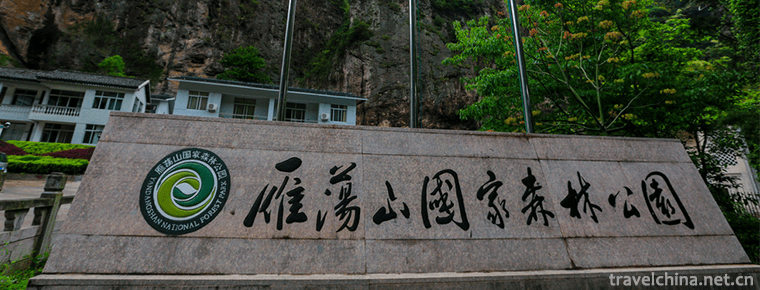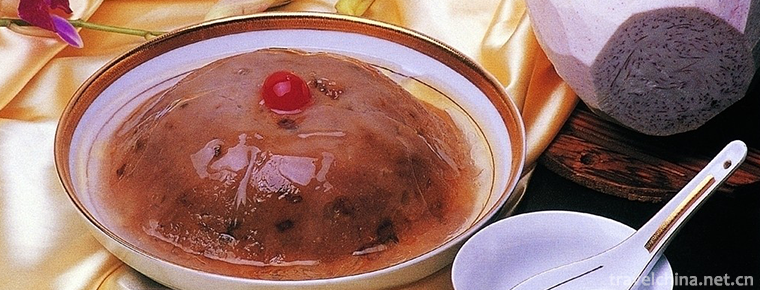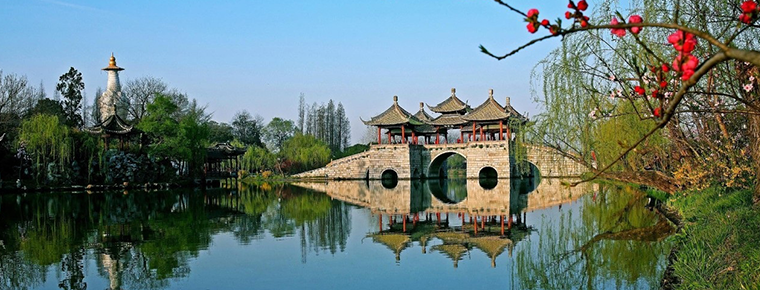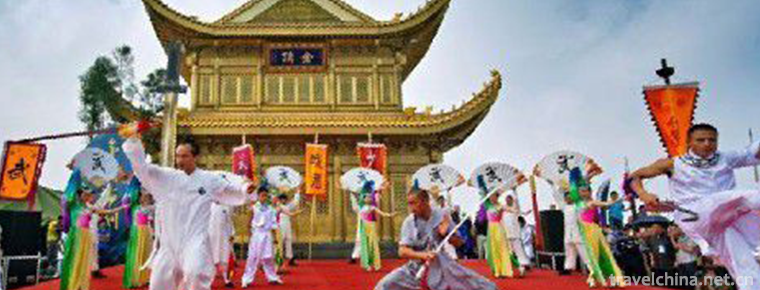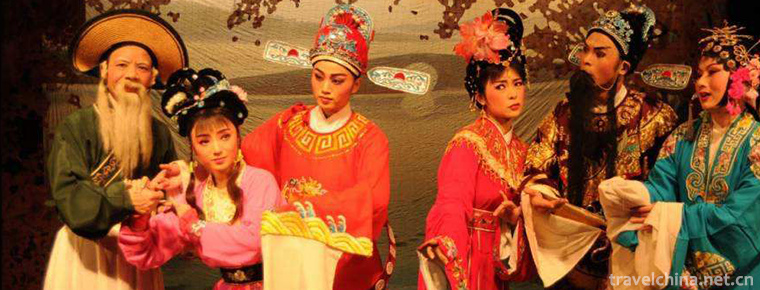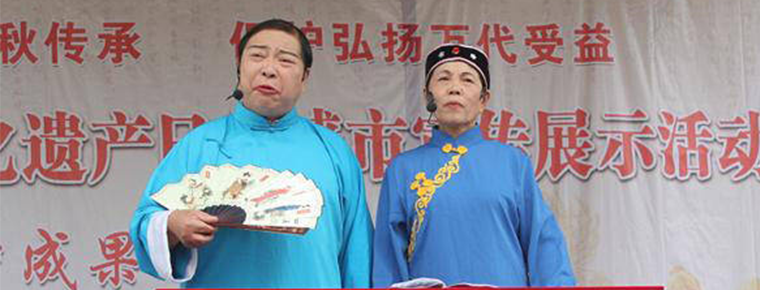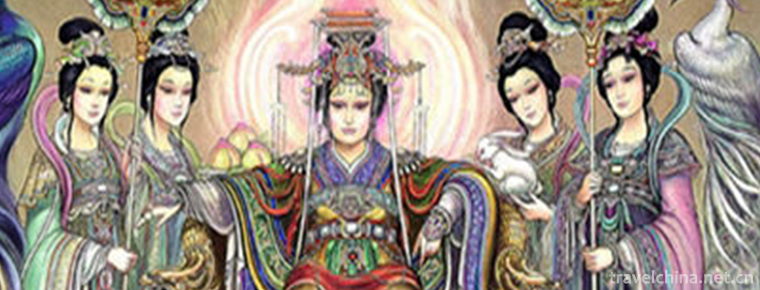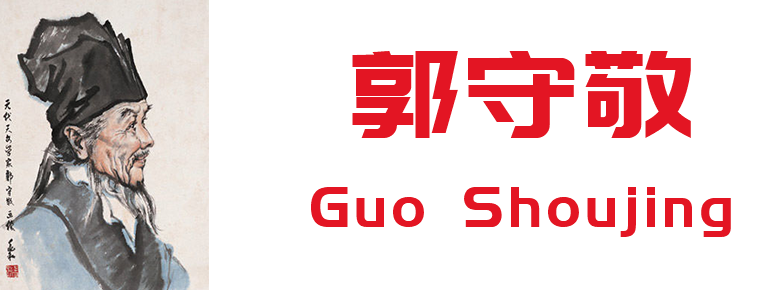Han Embroidery
Han Embroidery
Han embroidery, one of the traditional embroidery techniques with Chinese characteristics, is based on Chu embroidery, which combines the merits of various embroidery methods from the north and the south, and has developed a new embroidery method with distinctive local characteristics.
Han embroidery is mainly popular in Jingzhou, Jingmen, Wuhan, Honghu, Xiantao and Qianjiang. Han embroidery works have been exhibited in Beijing for many times, and participated in international exhibitions such as Paris and Warsaw, which have received good comments. In 1910 and 1915, Han embroidery won gold medals at Nanyang Competition and Panama International Exposition.
On June 7, 2008, Han embroidery was approved by the State Council to be included in the second batch of national intangible cultural heritage list.
In 2013, the Wuhan Embroidery Museum, the first privately-run Han Embroidery Museum in Hubei Province, was established in Xinyuan Community of Jiangjiang, Hanyang.
Historical origin
Referring to the origin of Han embroidery, its historical limit is still uncertain. It is still under discussion. The development of archaeology has uncovered the mysterious veil of history. With the increase of unearthed cultural relics, people have a new understanding of the origin of Han embroidery. According to the historical origin of Chu embroidery and Han embroidery in cultural connotation, technical characteristics and artistic style, researchers generally believe that the origin of Han embroidery can go up. Back to the Warring States Period, Chu embroidery, also known as Chu embroidery, was excavated in the Warring States Period, Chu embroidery in the territory of the State of Chu, Ma Shan, Hubei and other Chu tombs, which provided a large number of basis for the study of Chu Xiu. The cultural relics include some exquisite embroidery workmanship, graceful patterns, bold and unique design embroidery, which are precious objects left over from the Han embroidery in Jingchu area. Material, Pre-Qin period is the beginning of embroidery in China, but in China, the highest level of silk industry is represented by the silk industry of Chu State. Quyuan's "Chu Ci. Zhao Soul": "Jadeite Pearl quilt, rotten and glossy", "by the literary clothing fiber, beautiful but not strange." It depicts a picture of Chu Palace silk fabrics, and the bold and changeable, elegant and vulgar style of Han embroidery inherits the genetic characteristics of the ancient Chu people. Nowadays, Chu cultural and artistic heritage is widely spread as artistic treasures with elegant shape, beautiful rhyme, rich color and smooth lines. There are also many such artistic features in Han embroidery patterns, which is the emphasis of genetic inheritance of Chu culture in the Minnian period. First, the inheritance of artistic characteristics is due to the heroic personality, enthusiasm and romance of Chu people; secondly, the external causes and motivation of the inheritance of artistic characteristics are due to the artistic beauty of Chu art itself, which deeply affects the traditional Chinese aesthetic taste. Because of these two reasons, Chu embroidery can be inherited and evolved into Han embroidery. This trend is very difficult to shake and change.
However, the peak of Han embroidery was undoubtedly the end of Qing Dynasty and the beginning of Ming Dynasty. Jiangling in Jingzhou was the center of early political, economic and cultural development in Hubei. Hankou Town, as a military center, was developed in Ming and Qing Dynasties. Businessmen gathered here, that is, after Jiangling, it became the new political and economic center of Hubei Province. With the prosperity of Hankou Town, the Han Opera was spread. At this time, Jingzhou embroidery was not only used for folk costumes and religious sacrifices, but also for local theatre matching, head (costume). The development of Han Opera created favorable conditions for Han embroidery. It spread from Jingzhou to Han Dynasty and eventually took Wuchang as the production base.
In the late Qing Dynasty, embroidery shops mostly opened in Yingfangkou, Tangjiao, Baishazhou, Jiyuqiao and Huangpi Street and Dajiajie in Wuchang. At that time, an embroidery Bureau was established, which was a special organization for the management of Han embroidery. These shops were concentrated in Hankou, the Wanshougong area, that is, our Daxing Building area. According to the data, there were 3 marriages, so the shape was then. It has become a famous embroidery street in Wuhan, with more than 2,000 embroidery workers, pushing the development of Han embroidery to its peak. At that time, a large number of famous heavy-duty painters, such as Tong Lingqiao and Zhang Jinqian, were also good at Dragon and phoenix pattern Yang Xintian and so on. With the influence of strong artistic atmosphere, Wuhan embroidery industry will focus on the training of painters and designers, which is the key to the healthy development of Han embroidery technology.
Historical inheritance
From the mid-Spring and Autumn Period to the Warring States Period, the embroidery products of Chu State had been sold far to Siberia, which showed the development of embroidery industry. The silk weaving industry of Chu State in the south is sufficient to represent the highest level of silk weaving technology in China in the mid-Spring and Autumn Period. Quyuan's Chuci Calling Soul depicts a picture of Chu Palace silk fabrics for us, "Jadeite Pearl quilt, rotten and glossy. JianA Fubi, Luo Zhang; the compilation group, knot a little bit...................................... Jade curtains, decorated with lofty, "by the textile clothes, beautiful but not strange." This demand stimulates the production and development of embroidery products is not difficult to imagine. At the same time, the development of folk opera and the prevalence of witchcraft in Chu culture provided fertile ground for embroidery to grow toward the folk.
The heyday of Han embroidery was the end of Qing Dynasty and the beginning of the Republic of China. During the Xianfeng period, Hankou had a weaving and embroidery bureau, which concentrated on embroidery uniforms and various ornaments. At the end of the Qing Dynasty, there were many embroidery shops in Yingfangkou, Tangjiao, Baishazhou, Jiyuqiao, Huangpi Street and Dajia Street in Wuchang, and there was also an embroidery street in Hankou. At that time, Han embroidery products were mainly divided into three categories: embroidered clothes, embroidered pillows, door curtains, curtain edges, embroidered shoes, headscarves, aprons, purses and so on, which were mostly used for dowry. Among them, the embroidered costumes in Hankou are quite famous. Second, decorations. There are wall hangings, halls, screens, lottery accounts, hall colors, dragon clothes, lion skin, costumes, props and so on. Thirdly, etiquette supplies for the worship contest, including gowns, gowns, coloured coverings and so on.
During the War of Resistance Against Japan, the Japanese invaded Wuhan, and the embroidery street in Hankou was burned down. The embroidery in Hankou declined day by day, and its skills were almost lost. Only after the founding of New China did Han embroidery regain its splendor. In the 1980s, Han embroidery products have developed from small civil embroidery and a small amount of classical theatrical embroidery clothes to more than ten varieties, such as curtains, clothes, drapes, quilts, pillowcases, garments, large-scale, central halls, strip screens, folders, rockers and screens. In 2003, Ren Benrong, the descendant of Han embroidery, set up the Han embroidery studio in Han Dynasty, and vigorously promoted the Han embroidery skills.
The embroidery of the middle Warring States period unearthed from Tomb No. 1 of Mashan in Jiangling further confirms the historical carrying capacity of Han embroidery. Embroidery is mainly red, yellow, green, blue and other bright colors. Embroidery is filled with intensive full embroidery or falsified parts of the outline of the embroidery pattern. The embroidered rare birds and beasts, exotic flowers and beautiful plants are rich in three-dimensional sense and virtual reality. The colors are bright, the patterns are magnificent, elegant and rich, which undoubtedly has a profound impact on the formation of the aesthetic concept of Han embroidery artists that "flowers without real fruits, lively first". 。
Inheritance significance
With the replacement of manual embroidery by electric embroidery, the scenery of Han embroidery is no longer there. What we see is that electric embroidery is faster than manual embroidery, while neglecting that Han embroidery is not only embroidery, it bears the cultural connotation of Jingchu region, represents the cultural connotation of this region, far beyond the boundaries of skills, folk culture is the soul significance of making it so magnificent and precious.
Although the dying Han embroidery art has been successfully declared as the intangible cultural heritage protection project in Hubei Province, its brilliant and distinct folk cultural characteristics of Jingchu have not yet been fully developed and applied. It is a pity that such excellent handicraft with national characteristics has not been valued and promoted properly in modern times.
If economic growth is regarded as the blood of a city, then the cultural connotation is undoubtedly the soul of a city. Urban culture, in short, is a tacit understanding between the city and the citizens in the process of formation and development. A city without local culture and a long history is at least shallow, with all kinds of places to meet material needs. In the urban construction in the 21st century, we have neglected the comprehensive benefits of society, culture and history contained in urban civilization, neglected the individual culture of the city and despised the local art. Han embroidery is a local art in Jingchu area. It represents the cultural background and the soul of the city in Jingchu area. It deserves to be refined, sorted out and developed.

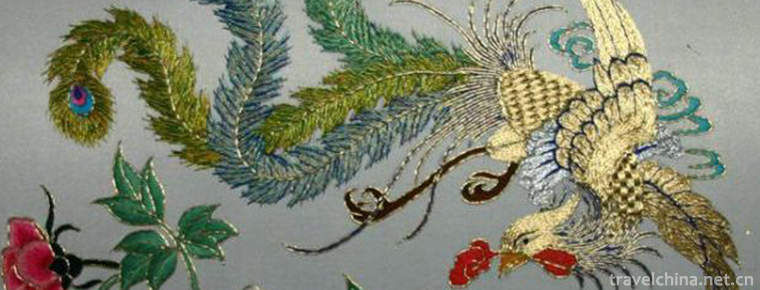
-
Yandang Mountain Scenic Spot
Yandang Mountain, the first batch of national key scenic spots, has the titles of "Sanitary Mountain, Safe Mountain, Civilized Mountain", National Civilized Scenic Spot, National AAAAA Touri.
Views: 190 Time 2018-12-07 -
Dalian Modern Museum
Dalian Modern Museum is located at No. 10 Convention and Exhibition Road, Shahekou District, Dalian City. It is located in the northwest side of Xinghai Square. It is the first comprehensive museum na.
Views: 112 Time 2019-01-07 -
Eight treasures taro
Babao taro paste is one of the local traditional sweet spots in Fujian cuisine. This dish is delicate, soft, sweet and delicious. It looks like a cold dish but burns its mouth. It has a unique flavor..
Views: 113 Time 2019-03-27 -
Korean Traditional Wedding
The traditional wedding ceremony of the Korean nationality in China is formed by the continuous integration and development of the Korean ancestors with the Han nationality and other minority.
Views: 162 Time 2019-04-16 -
Landscape Architecture in Yangzhou
Yangzhou gardens began in the Western Han Dynasty, flourished in the Sui and Tang Dynasties, matured in the Song and Ming Dynasties, and flourished in the Qianlong Period of the Qing Dynasty..
Views: 143 Time 2019-04-21 -
martial art of emei
Emei Wushu is one of the traditional Chinese Wushu schools, and its birthplace is Emei, a famous mountain in China. Including the worldwide spread of "Five Flowers".
Views: 107 Time 2019-04-28 -
Taiwanese Opera
Gezi Opera, a local traditional drama in Zhangzhou and Xiamen, Fujian Province, is one of the national intangible cultural heritage..
Views: 278 Time 2019-05-01 -
Hanchuan good books
Hanchuan Shanshu is a kind of traditional folk music which combines rap and singing in Hubei Province. Since the Qianlong period of the Qing Dynasty, it has a history of 260 years. .
Views: 126 Time 2019-05-02 -
The Myth of West Queen Mother
Western Queen Mother is also known as "Queen Mother", "Golden Mother", "Old Mother of Yao Chi", "Golden Mother of Yao Chi", "Golden Mother of Xichi", .
Views: 261 Time 2019-07-01 -
Ring Dance of Yi Nationality
Ling Dance of the Yi Nationality, to be known as foot-jumping, is called "Qi He Zhe" in the Yi language, which means the spiritual farewell dance. It is a traditional folk dance performed an.
Views: 125 Time 2019-07-12 -
Guo Shoujing
Guo Shoujing (1231 - 13 16). Xingzhou Xingtai county (now) Hebei Province Xingtai City People. Yuan Dynasty Famous astronomers, mathematicians, experts in Hydraulic Engineering Early teacher Liu Bin Z.
Views: 286 Time 2019-09-07 -
University Of International Business And Economics
The University of Foreign Economic and Trade is a national key university directly under the Ministry of Education. The first batch of "211 Project" and the first batch of "double first.
Views: 105 Time 2019-09-22
